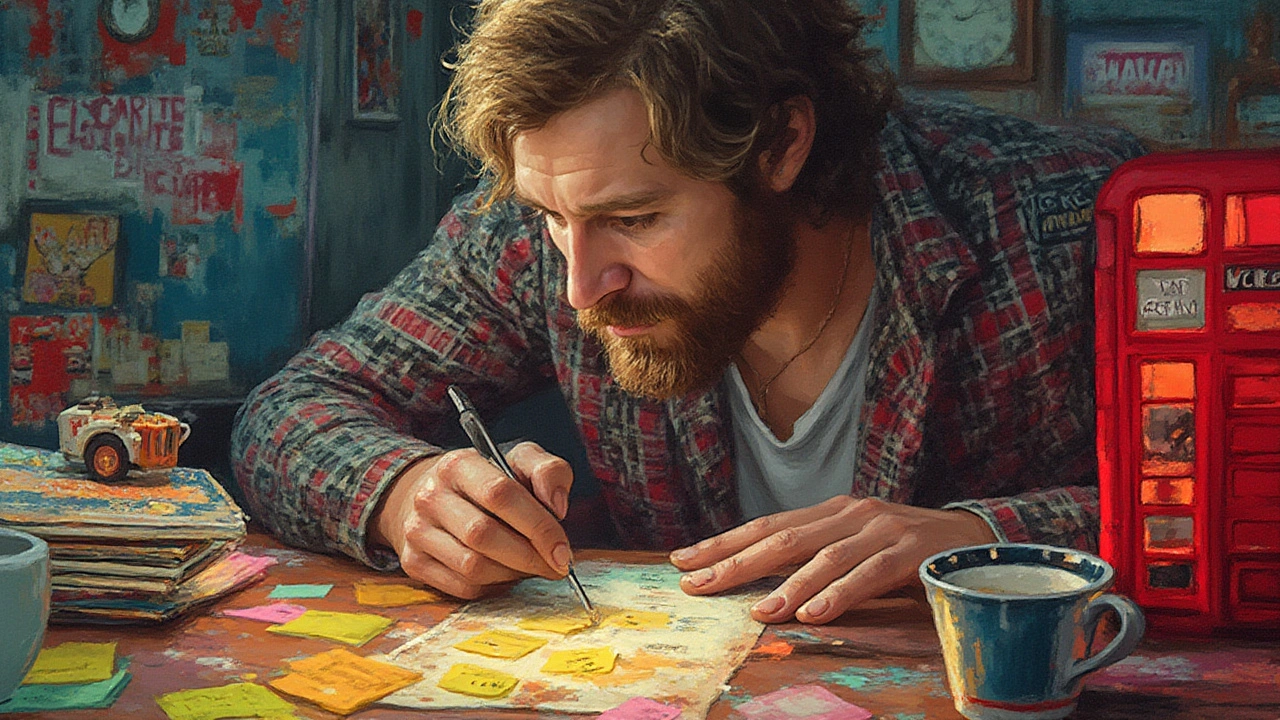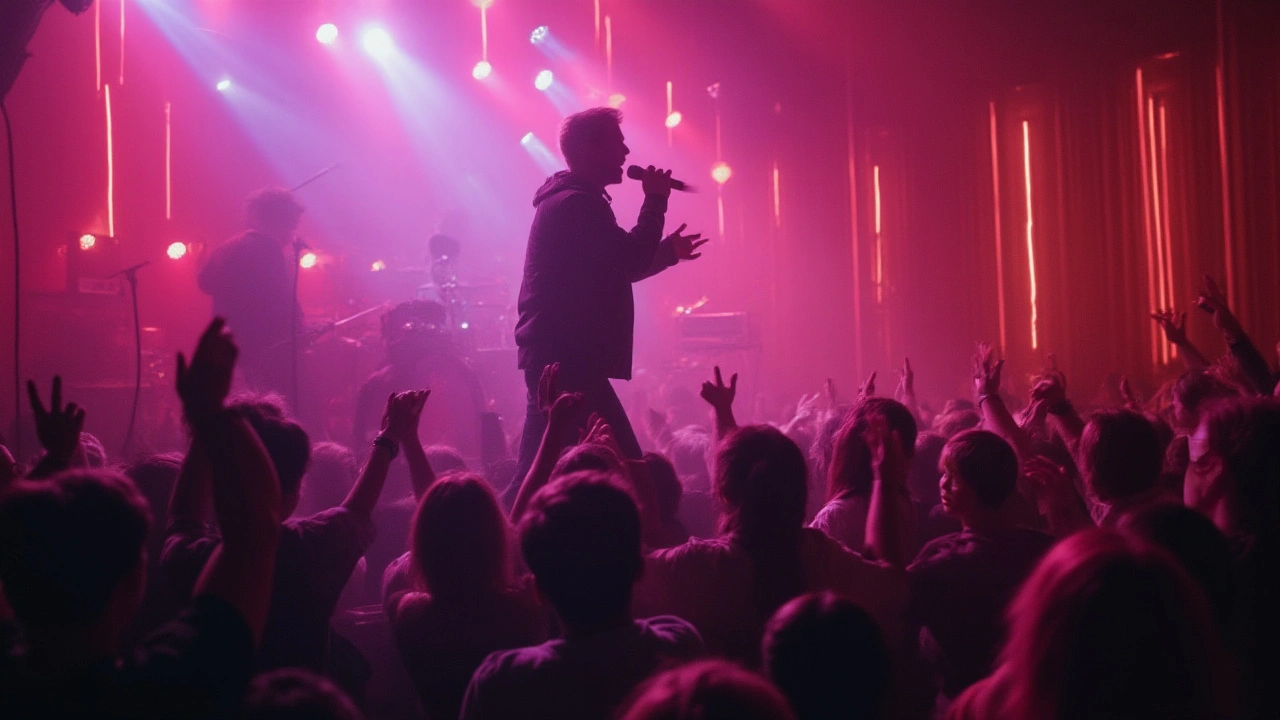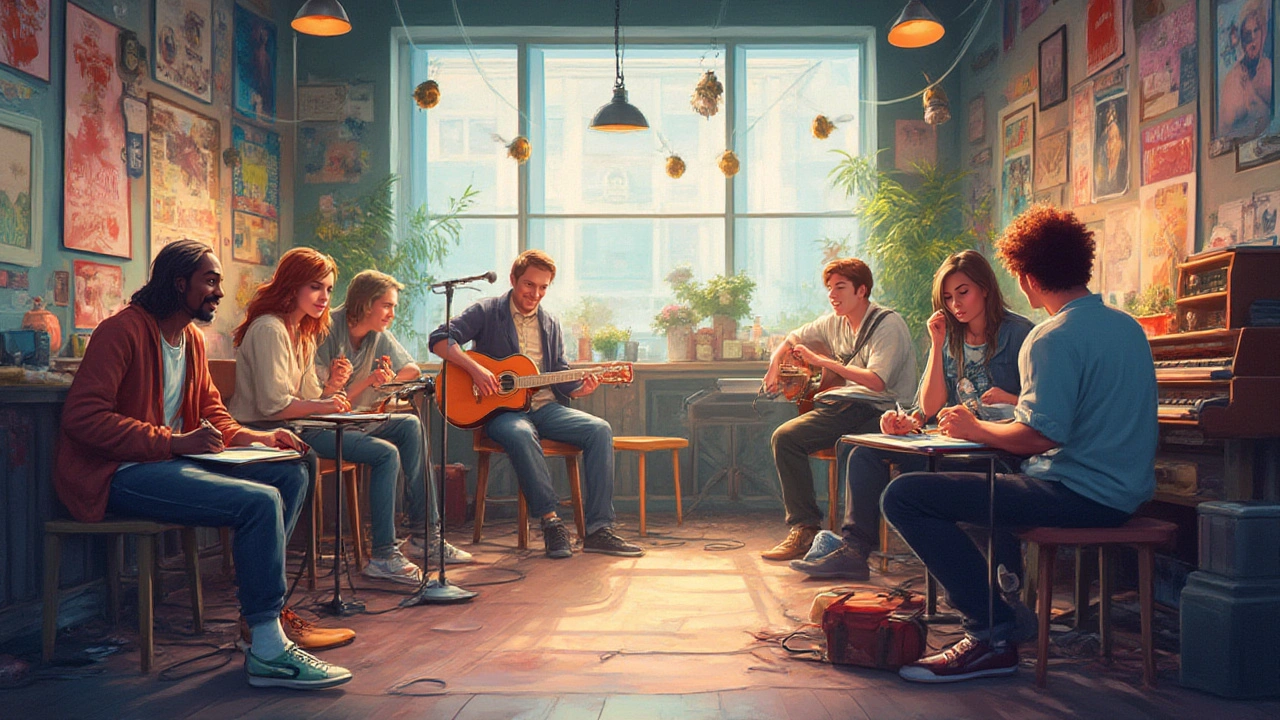Picture this: a song you can’t get out of your head. You’re humming the chorus in your car, nodding to the beat at the grocery store, maybe even dancing in your kitchen. It’s addictive, unavoidable, and crafted to stick. Why do some pop songs claw their way into our minds, while others fade away after one listen? The secret’s in the songwriting—the heart and art of every top-charting single you’ve ever loved (and sometimes hated). Today, pop is more than a genre; it’s a machine that keeps evolving, rewriting its own rules in real time. Pull back the veil and you’ll find a world of creativity, collaboration, and careful craft most listeners never see. But some techniques never go out of style.
The Anatomy of a Pop Song: What’s Under the Hood?
Every pop song that makes it big shares one thing: structure. This isn’t about rules that stifle creativity—it’s about giving listeners a familiar path, so the surprise moments shine even brighter. Most hits rely on the tried-and-tested verse-chorus-verse-chorus-bridge-chorus format. Songs like Taylor Swift’s “Shake It Off,” Dua Lipa’s “Don’t Start Now,” and even throwbacks like Michael Jackson’s “Billie Jean” use this blueprint. Why does this structure work so well? It creates a musical map. The verses set the story, while the chorus brings those big emotions and hooks. Then, the bridge throws in a curveball, offering a breath of fresh air before the final chorus hits home.
Hooks are the secret sauce. It’s not just a catchy line or melody—it’s the part of a song that glues itself to your brain. Max Martin, the man behind more than 20 Billboard Hot 100 number ones, says,
This is pop music. The first thing you’re trying to do is catch someone’s ear and never let it go.Writing a great hook is part science, part magic. It should be instantly memorable and easy to sing. That’s why choruses favor repeated notes and words. Singers like Ariana Grande and Ed Sheeran aren’t afraid to lean on repetition; their choruses become anthems at concerts, because everyone knows them within seconds.
Rhythm and tempo matter, but it’s melody that usually rules. A simple, hummable melody is the backbone of a hit. Look at Billie Eilish’s minimal but haunting “bad guy”—it’s all about that direct, almost childlike melody line. Pair this with lyrics that strike a balance between personal and universal, and you’ve got a recipe for connection. The magic happens when a songwriter finds the sweet spot: a melody easy enough for thousands to sing, but fresh enough to avoid sounding like everything else out there.
The instruments? They’re carefully chosen, too. Pop production draws from everything—synthetic drums, real guitars, piano, samples, and even orchestras on ballads like Adele’s “Someone Like You.” But simplicity is king. Each part, from synth line to clapping hands, serves the song’s emotional punch, never just complexity for its own sake. Songwriters and producers know less can be more—listen to the sparse verses of Camila Cabello’s “Havana.”
Modern pop also lives on collaboration. Gone are the days of every song being written by a solo genius with a guitar in their bedroom. Today’s hits often have whole teams behind them. In 2023, Spotify revealed that top charting songs had an average of nine credited writers. This isn’t a sign of soullessness—it’s a group effort to chase the best possible hook, lyric, or beat. Everyone brings something to the table: maybe one person nails the melody, while another sharpens the chorus lyrics to perfection. It’s like a pop music puzzle, with every piece finding its place so the song just clicks.
Lyrical Tricks: How Words Make an Impact
You can’t talk about songwriting without tackling lyrics. Love, heartbreak, Saturday night parties, self-empowerment—these themes never go out of style. But in pop, the trick is to cut through the noise with new takes or unexpected phrasing. Consider Sia’s “Chandelier.” Instead of writing a typical party anthem, she flips perspective and captures the loneliness hiding behind the wild nights. That twist—a story told differently—can make a lyric stick.
Universal emotions, told with just enough detail, help listeners project their own lives onto the song. Halsey, for example, fills her hits with specific images ("I found God, I found him in a lover..."), but leaves room for anyone to relate. Songwriters often say, if the emotion feels real, the words will land. Vulnerability sells. When Lewis Capaldi cries out in “Someone You Loved,” you believe every word because he’s drawn straight from the gut.
Sometimes, simplicity wins. Carly Rae Jepsen’s “Call Me Maybe” isn’t about intricate wordplay—it’s direct and fun: “Hey, I just met you, and this is crazy, but here’s my number, so call me maybe.” Radio programmers and playlist editors love songs that get their message across in the first thirty seconds. And so do listeners.
Tight syllable counts, clever rhymes, and internal assonance (like rhyming words inside lines) all give lyrics that sticky, singalong quality. Songwriting teams will sometimes go through a dozen rewrites, just to make sure each line sings well. Some, like Swedish producers, are known for their almost mathematical approach to word choice. As songwriter Ali Tamposi (responsible for Camila Cabello’s “Havana” and Kelly Clarkson’s “Stronger”) puts it,
The lyric needs to feel inevitable, like there was no other way it could have been said.
Of course, lyrics sometimes walk a fine line with clichés. There’s a reason so many pop songs rhyme “heart” with “start” or “apart,” but avoiding cringe isn’t just about ditching the obvious—it’s about delivering it in a new context. Throw in a bit of wit, a twist of irony, or a splash of clever subversion, and you’ve got something fresh. Billie Eilish’s “bad guy” lyric (“I’m the bad guy, duh”) proves you can throw out the songwriting textbook if your delivery feels right.
Songs often play with language—slang, repetition, playful nonsense words (think “Umbrella, ella, ella, eh, eh, eh”), and unexpected metaphors. This playfulness, combined with relatability, is what gives pop songs their repeating power.

Melody, Harmony, and Chord Progressions: Hooks Beyond Words
Pop songwriting lives for the hook, but not every earworm hangs on lyrics alone. It’s the interplay of melody and harmony—the way musical notes dance over chords—that hooks us long before we know the words. If you’ve ever caught yourself humming a tune without remembering the lyrics, you’ve felt the power of what songwriters call the “top line.” That’s the technical term for the main melody (usually delivered by the lead singer).
Most chart-toppers rely on a handful of classic progressions. The I–V–vi–IV progression (if you’ve learned a guitar, that’s C–G–Am–F in the key of C) appears in everything from The Chainsmokers’ “Closer” to Ed Sheeran’s “Perfect.” Researchers at the University of California found this pattern in over one in five Billboard Hot 100 top tens since 1990. It works because it gives a sense of journey and return; our brains crave the satisfaction of a homecoming.
Melodies, meanwhile, are carefully crafted to ride above the mix. Short, repeating phrases (think the opening of Lady Gaga's “Poker Face”) get stuck faster than sprawling, unpredictable lines. Songwriters often test their melodies by singing them a cappella—if it’s catchy without any backing tracks, it’ll survive the noise of production. New pop leans into unexpected melodic leaps, funky rhythms, or even spoken lines (hello, “Old Town Road”) to break up any monotony.
Harmony isn’t just about stacking pretty chords. Songwriters often tweak classic progressions by adding “color”—subtle changes that make a song feel modern or emotionally charged. Think of how Lorde’s “Royals” uses pared-down harmonies to highlight its attitude, or how Shawn Mendes throws in a surprise minor chord for bittersweet effect.
Hooks aren’t just in the chorus; intros, bridges, or even vocal ad-libs can all become the most memorable part of a hit. The “Yeah Yeah Yeahs” in Outkast’s “Hey Ya,” or the whistle in Flo Rida’s “Whistle”—these are hooks, too. In the era of TikTok, a 15-second melodic moment can launch a song to viral stardom before radio ever touches it.
If you’re writing your own pop songs, here’s a quick cheat sheet for melody and harmony:
- Keep your melodies singable. If you can’t sing the line three times in a row without getting lost, it’s probably too fussy for pop.
- Build tension. Change up the melody rhythm or leap up the scale before resolving to a satisfying note in the chorus.
- Play with chord inversions or add “seventh” chords to classic progressions for a rich, modern sound.
- Don’t be afraid of silence—breaks and pauses create anticipation for that next big moment.
Here’s an at-a-glance look at some of the most popular chord progressions in hit pop songs:
| Chord Progression | Example Songs |
|---|---|
| I–V–vi–IV | "Let It Be" (The Beatles), "Someone Like You" (Adele), "With or Without You" (U2) |
| vi–IV–I–V | "Apologize" (OneRepublic), "Love the Way You Lie" (Eminem ft. Rihanna) |
| I–vi–IV–V | "Stand by Me" (Ben E. King), "Unchained Melody" (Righteous Brothers) |
| IV–I–V–vi | "Perfect" (Ed Sheeran), "She Will Be Loved" (Maroon 5) |
Industry Secrets: Collaboration, Demoing, and the Stream-First Era
If the music business feels mysterious, that’s because a lot goes on behind the scenes. These days, pop songwriting rarely happens in isolation. Most of today’s major-label hits come from sessions where producers, track makers, topliners, and artists work side by side—or, thanks to technology, across continents. Songwriter camps are a regular thing now: think of a mansion full of writers in Malibu, shuffling between studios until a smash emerges. That’s how hits like Dua Lipa’s “New Rules” or BTS’s “Dynamite” happened.
Demos—the early recordings of a song—are a crucial step in this process. Songwriters might send in voice memos, stripped-down piano tracks, or fully produced demos to artists, labels, or publishers. A-list names like Rihanna or Justin Bieber often record dozens of demos before choosing “the one.” Sometimes, songwriters pitch songs with their own vocals, leading to surprise careers (Sia’s vocals on her own demos helped launch her solo fame).
The game changed even more with the streaming revolution. Today, the ideal pop song isn’t just radio-ready—it’s stream-ready. Spotify revealed that nearly a third of listeners skip before the chorus, so songwriters have shifted tactics. The best are front-loading hooks; think Lil Nas X’s “MONTERO (Call Me By Your Name)” that smacks you with the chorus in less than thirty seconds. Length matters, too. Average song length has dropped, with many hits now clocking in under three minutes. This isn’t laziness—it’s strategic. Shorter songs mean more streams, which means better chart positions and more revenue for artists and writers alike.
Don’t underestimate the power of data. Analytics tools now track which lyrics or musical hooks make people replay or share a song. Songwriters get this info and use it to tweak songs in real time, or to decide which demo gets pushed next. Welcome to pop’s new algorithmic era.
Publishing deals and co-writer splits can get complicated, with money split between everyone from the melody writer to the producer. In 2024, ASCAP—the American Society of Composers, Authors, and Publishers—reported a 15% increase in collaborative royalties from multi-writer songs. That shows just how much co-writing is the norm.
If you’re aiming to break into writing, industry advice often circles back to networking and relentless demoing. Write every day, collaborate as much as you can, and keep sending those voice memos—sometimes that half-finished idea in your phone is the one that catches an A&R rep’s ear.

Trends, Tips, and the Future: Where Pop Songwriting’s Headed
Pop keeps shifting ground. Two years ago, guitars were “over,” now they’re back in everything from Olivia Rodrigo to The Weeknd. Social media, especially TikTok, is changing not only how songs are discovered but how they’re written: now, an artist might write a whole bridge just for a viral clip. Lil Nas X practically built his career on this idea, watching early memes turn “Old Town Road” into an international hit.
Lyrics keep moving, too. Inclusivity and realness are everywhere. In 2025, more chart-toppers than ever are being co-written with Gen Z artists who’ve grown up online. That means more references to mental health, online life, and culture than ever. Would you have bet on Olivia Rodrigo’s “Driver’s License,” a piano ballad with raw, diaristic lyrics, becoming the biggest pop song of the decade? That’s the magic—nobody knows which twist will spark next.
Self-production is on the rise. With advanced laptop software, artists like Billie Eilish record Grammy-winning albums in bedrooms. There’s no barrier to entry—just craft, grit, and endless trial and error. If you want to write pop, you don’t need a flashy studio, just a phone or laptop and the guts to be honest and shamelessly catchy.
If you’re starting out, write about what you feel, not just what you think people want to hear. Break the fourth wall—address the listener, talk to yourself, use weird sounds or oddball phrases. Sometimes the thing that seems “off” is what turns your song into an anthem.
Here are some quick-fire tips pulled from pros in the business:
- Keep ideas simple. If you can’t describe the song in a single sentence, it needs work.
- Finish what you start, even if it’s imperfect. Most hits started as rough sketches.
- Record every idea—even bad ones—because it’s easier to fix a mess than a blank page.
- Collaborate with different people. Every new pair of ears brings something you might miss alone.
- Listen to everything, from global hits to niche genres—the next big hook could come from anywhere.
The art of pop songwriting sits at the crossroads of emotion and math, repetition and revolution. Sure, formulas exist—proven structures, clever hooks, smart rhymes—but the real spark lies in a human moment: a lyric about heartbreak, a melody that won’t leave your mind, a sound that feels brand new. And every catchy chorus chasing the top of the charts owes its magic to the relentless, inventive songwriters who dare to say what we’re all feeling—and make us sing it at the top of our lungs. That’s the art. That’s the thrill. And it’s always evolving.

